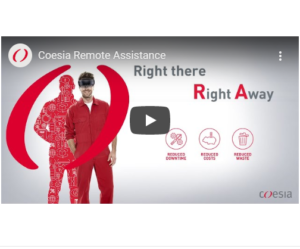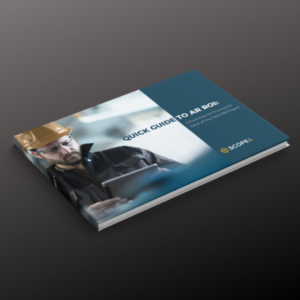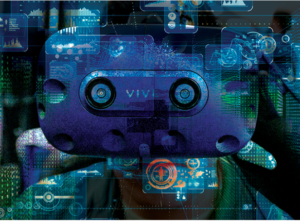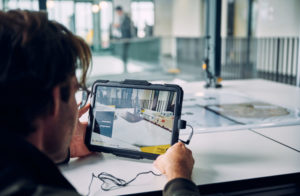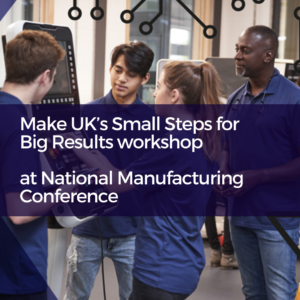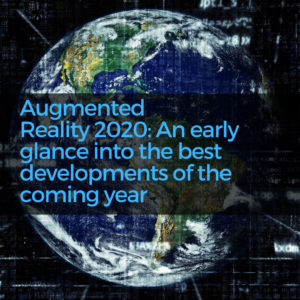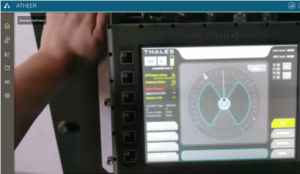Remote AR
Augmented reality comes in many forms and one particularly exciting aspect that’s quickly gathering momentum is Remote AR.
While many of us are aware that augmented reality predominantly relies on superimposing digital layers onto a real-world backdrop, Remote AR takes matters further in enabling users to interact with each other through AR from anywhere in the world.
A strong early example of Remote AR can be found in Avatar Chat, by Magic Leap(https://www.magicleap.com/news/product-updates/connect-with-friends-with-avatar-chat). Here, users can create their own augmented reality avatars that interact with friends as if they were joining you at a dinner table. Each participant is projected into the room through the use of AR glasses in the form of their avatar – only they could actually be interacting with each other from across the world.
We live in a time of unprecedented levels of interconnectivity. So much so that we regularly look to share our experiences through technology. With this in mind, it’s reasonable to expect Remote AR to continue to emerge as the software that supports it becomes more powerful.
Remote collaboration through AR could ultimately enhance the way students and pupils interact with tutors and could provide an excellent platform for training staff without the need for them to be in the same room as their trainers.
Remote AR could also be a great tool for mitigating loneliness among individuals who are living away from family and friends for education or work reasons.
Apple enters the fray
One of the largest driving forces behind AR’s ascent in 2020 will come from the investments made by Apple.
The computing giants are set to release an AR headset in the middle of next year which encourages ‘third-party brand collaboration’.
The release of an Apple AR headset will be welcome news for developers. Apple’s earlier release of ARKit has paved the way for plenty of augmented applications in recent years and has led the company to become recognised as one of the more trustworthy AR practitioners of today.
The Apple AR headset will provide a brand new platform for developers to cater to – thus inviting more innovation and more custom. While the hardware itself is the subject of much mystery and debate, Bloomberg understands that the new glasses will have the power to “to display things such as texts, emails, maps, and games over the user’s field of vision.”
Just as they did with modern smartphones, it’s hoped that Apple’s new AR glasses will represent a massive step for the industry of augmented reality and more adopters will be drawn in by its 2020 release.
Practical applications
Augmented reality will continue its march into hands-on industries like engineering, education, and healthcare in 2020. The practical applications of AR technology are far-reaching and extend way beyond the realms of gaming and communications.
Scope AR is an excellent example of the innovations that we’ll see throughout 2020. This kit enables engineers to provide a live view of their line-of-sight and invites senior staff to provide visual instructions on how to operate complex machinery, for instance.
AccuVein is also making waves in the industry of healthcare, with AR technology capable of mapping out a subject’s network of veins and arteries to help improve the accuracy of doctors finding a vein in their patients.
On the other hand, companies like Mesmerise(https://www.mesmeriseglobal.com/), provide full-service studio crafting AR, VR & MR experiences for businesses in various industries. For example, publishers are now able to create interactive, immersive editorial pieces instead of plain text articles.
The great thing about augmented reality is certainly the practicality of the actions it enables. Given the level of consumerism that modern technology often finds itself pandering to, it’s refreshing to gain a glimpse into a world where an emerging piece of tech can be found to have applications outside of entertainment.
Keep on the lookout for more augmented reality solutions that are designed to aid everyday life throughout 2020, as developers look to new areas of the market to cater to.
Collaboration
Collaborative practices like conference calls run the risk of losing their impact due to there being no face-to-face interaction between members. However, 2020 may see some significant changes as businesses begin to adopt AR solutions in order to improve the learning experience of staff and clients alike.
Companies like Microsoft are already investing money into providing a video-calling system that offers users the option of displaying digital renderings of participants – enabling points to be made more effectively, as well as diagrams and charts to be presented more effectively.
5G will supercharge AR’s development
Last but certainly not least comes the looming spectre of 5G. Or, at least it should be. The super-fast fresh generation of mobile data connectivity has been a tad delayed but is forecast to arrive in 2020 in some form.
5G promises exponentially quicker loading times, browsing and app speeds for users, but it’s also set to make a massive impact in enabling the growth of emerging technologies like augmented reality.
Naturally, to create an accurate augmented rendering, it requires plenty of processing power and data. 5G will help developers to think big and become more ambitious with their applications for AR. Essentially, the developments that we’ve already looked at within this article have the potential to be supercharged by the high speeds offered up by 5G.
2020 will undoubtedly be a watershed year for augmented reality, and if developers can get to grips with 5G solutions early in the year, we could be treated to some spectacular arrivals on the app stores before 2021 arrives. There are plenty of reasons to be excited.
Article originally appeared ITProPortal.

